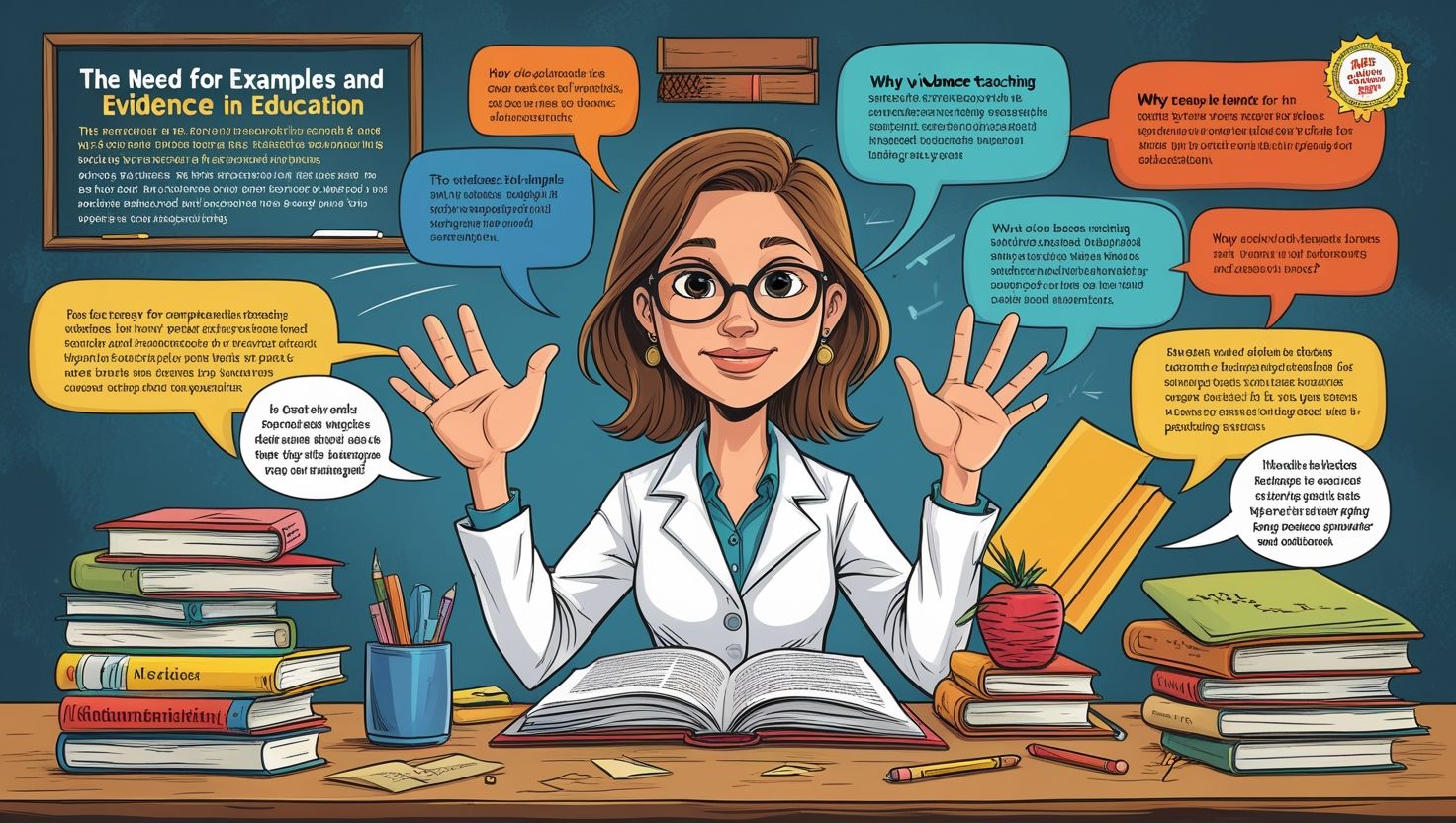The Need for Examples and Evidence in Education, Education is a fundamental pillar of human development, shaping individuals’ cognitive abilities, critical thinking, and problem-solving skills. However, for learning to be effective, it must be supported by concrete examples and empirical evidence. Theoretical knowledge alone is often abstract and difficult to grasp, making it essential for educators to incorporate real-world examples and research-backed evidence into their teaching methodologies. This approach not only enhances comprehension but also fosters engagement, retention, and practical application of knowledge.
Enhancing Comprehension Through Examples
One of the primary reasons examples are crucial in education is that they bridge the gap between abstract concepts and real-world applications. For instance, in mathematics, students may struggle to understand algebraic equations if they are only presented with formulas. However, when teachers provide examples such as calculating interest rates or determining distances, students can see the relevance of algebra in everyday life. Similarly, in history, discussing events like the French Revolution without contextual examples—such as the economic hardships faced by peasants or the influence of Enlightenment thinkers—can make the subject seem distant and irrelevant. By using case studies, analogies, and practical illustrations, educators make complex ideas more accessible.
Psychological studies support the effectiveness of examples in learning. According to cognitive load theory (Sweller, 1988), learners process information more efficiently when it is broken down into manageable chunks with relevant examples. For instance, medical students learn anatomy more effectively through cadaver dissections and 3D models rather than just textbooks. Similarly, engineering students benefit from hands-on projects that demonstrate theoretical principles. Without examples, students may memorize information temporarily but fail to apply it in different contexts.
Moreover, examples cater to diverse learning styles. Visual learners benefit from diagrams and videos, auditory learners from verbal explanations, and kinesthetic learners from hands-on activities. A study by Mayer (2005) found that multimedia examples (combining text, images, and narration) improve retention by up to 50% compared to text-only instruction. Thus, incorporating varied examples ensures inclusivity and maximizes learning outcomes.

Strengthening Arguments with Evidence
While examples clarify concepts, evidence validates their accuracy and reliability. In an era of misinformation, teaching students to rely on credible sources is essential. Evidence-based education ensures that teaching methods, curricula, and policies are grounded in research rather than assumptions. For example, the debate on homework effectiveness has been settled through longitudinal studies showing that moderate, purposeful homework enhances learning (Cooper et al., 2006), whereas excessive assignments cause stress without benefits.
Scientific evidence also guides pedagogical approaches. The “spacing effect,” proven by Ebbinghaus (1885), demonstrates that spaced repetition improves long-term retention compared to cramming. Schools applying this principle—through periodic revisions and quizzes—report higher test scores. Similarly, formative assessments (Black & Wiliam, 1998) provide real-time feedback, allowing adjustments in teaching strategies. Without empirical evidence, education systems risk adopting ineffective trends, such as learning styles theory, which lacks scientific backing despite its popularity (Pashler et al., 2008).
Furthermore, evidence fosters critical thinking. When students analyze research studies, they learn to distinguish between correlation and causation, anecdotal claims and statistically significant findings. For instance, in environmental science, discussing climate change without referencing temperature records, ice core samples, or peer-reviewed studies weakens the argument. By emphasizing evidence, educators cultivate a generation that values data-driven decision-making, essential in fields like medicine, law, and public policy.
Key Points on The Need for Examples and Evidence in Education
- Enhances Understanding
- Examples make abstract concepts concrete (e.g., real-life math problems, historical case studies).
- Helps students relate theory to practical applications.
- Improves Retention & Engagement
- Visual, auditory, and hands-on examples cater to different learning styles.
- Evidence-based methods (like spaced repetition) boost long-term memory.
- Supports Critical Thinking
- Evidence teaches students to distinguish facts from opinions.
- Encourages data-driven reasoning in subjects like science and social studies.
- Ensures Credibility
- Research-backed teaching prevents reliance on myths (e.g., ineffective learning styles).
- Validates educational policies and techniques (e.g., formative assessments).
- Prepares for Real-World Challenges
- Case studies and experiments develop problem-solving skills.
- Trains students to analyze and apply knowledge beyond the classroom.
- Combats Misinformation
- Teaches reliance on verified sources over anecdotes.
- Builds media literacy and skepticism toward unverified claims.
- Promotes Inclusive Learning
- Diverse examples accommodate varied cultural and cognitive backgrounds.
- Evidence ensures equitable and effective teaching strategies for all students.

Conclusion
Examples and evidence are indispensable in education, transforming abstract theories into tangible knowledge and ensuring instructional practices are scientifically validated. Without them, learning becomes superficial, and misinformation proliferates. By integrating real-world examples and empirical research, educators enhance comprehension, retention, and critical thinking, preparing students for real-life challenges. As education evolves, prioritizing evidence-based teaching will remain key to fostering meaningful and lasting learning experiences.
References
- Black, P., & Wiliam, D. (1998). Assessment and Classroom Learning.
- Cooper, H., et al. (2006). Does Homework Improve Academic Achievement?
- Mayer, R. E. (2005). The Cambridge Handbook of Multimedia Learning.
- Pashler, H., et al. (2008). Learning Styles: Concepts and Evidence.
- Sweller, J. (1988). Cognitive Load Theory.

6 thoughts on “The Need for Examples and Evidence in Education”